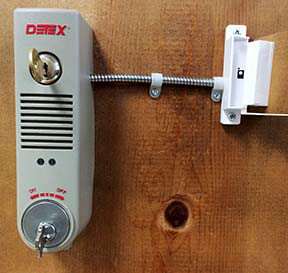 Do you want to hear a sad statistic?
Do you want to hear a sad statistic?
(Probably not, but I’m going to tell you anyway. Happy Tuesday!)
According to the National Association for Shoplifting Prevention, approximately one-in-11 people in America shoplift. (Why, people? You can do better.) As much as I want the problem itself to disappear, it just won’t happen.
The good news is, we have ways to help reduce shoplifting in retail stores. In this two-part series, we’re going to discuss a couple of ways you can take action to reduce shoplifting in your retail stores.
Reduce Shoplifting: Exit Door Alarms
Alarms are the number one way to help if your goal is to reduce shoplifting, but within that category, you have a couple of options. Exit door alarms are the easier of the two so we’ll tackle that one first.
Exit door alarms don’t have to be installed on the door itself and can be installed on the wall beside the door. This is because an exit door alarm operates using the contact sensors. There’s a magnetic field between the contact sensors and, when the field is broken, the alarm is sounded.
When it comes to price, exit door alarms are the least expensive option and can be installed on or next to any door, but there are a few things to consider if you think an exit door alarm might be the right choice for you.
If an exit door alarm is installed on the wall next to the door, your door won’t have as clean of a look as one that is installed directly onto the door. With one that’s installed next to the door, you have exposed wires running from the device itself to the contact sensor. If those wires are left exposed, they can easily be tampered with. We recommend the use of an armored cable to help keep that from happening.
Also to keep in mind is alignment is key when it comes to exit door alarms. If your door somehow becomes misaligned, it can cause the magnetic fields not to align and the door alarm not to work.
Curious about exit door alarms and want to know more? Give us a call and we’ll be happy to help answer any questions you might have.
